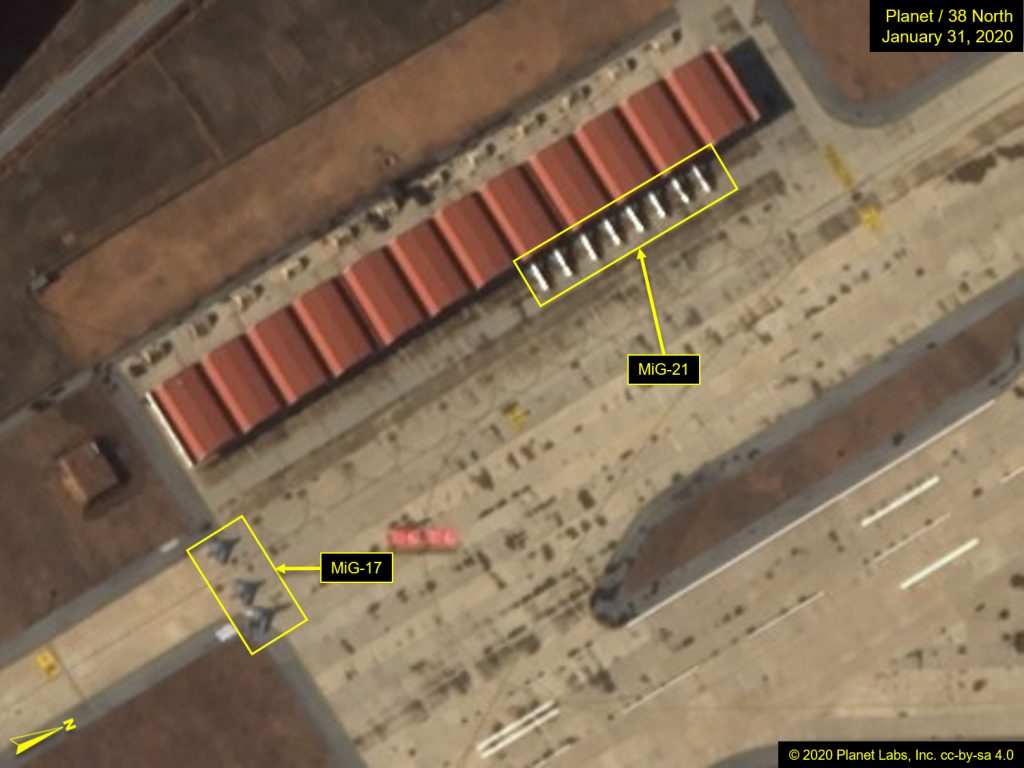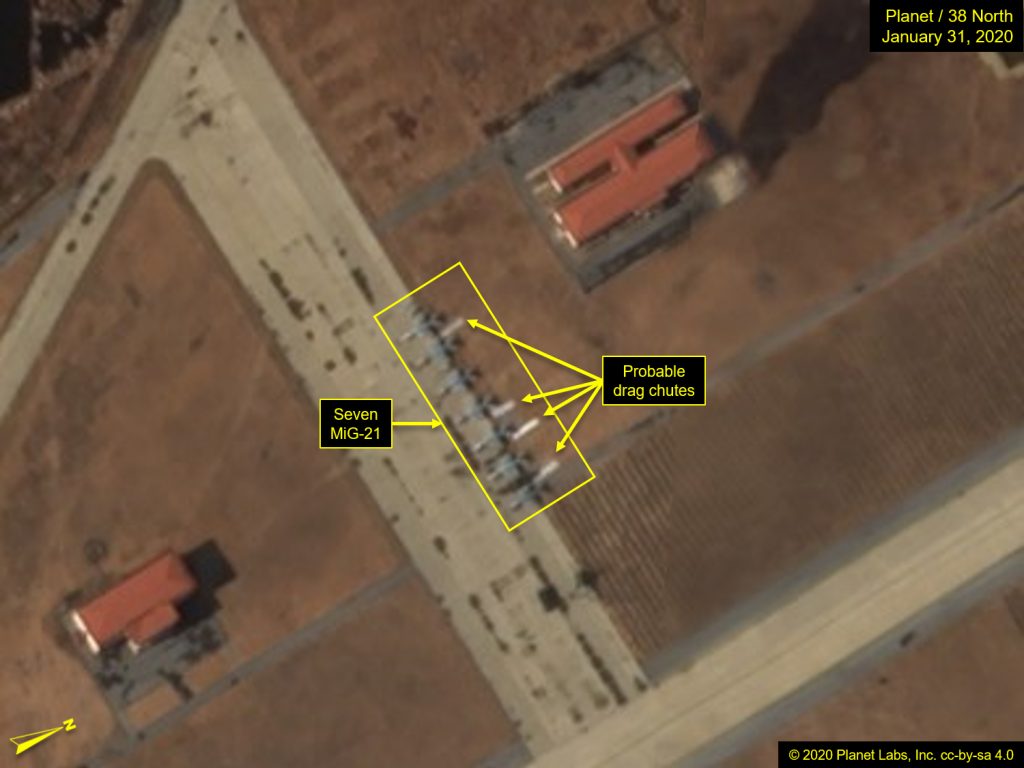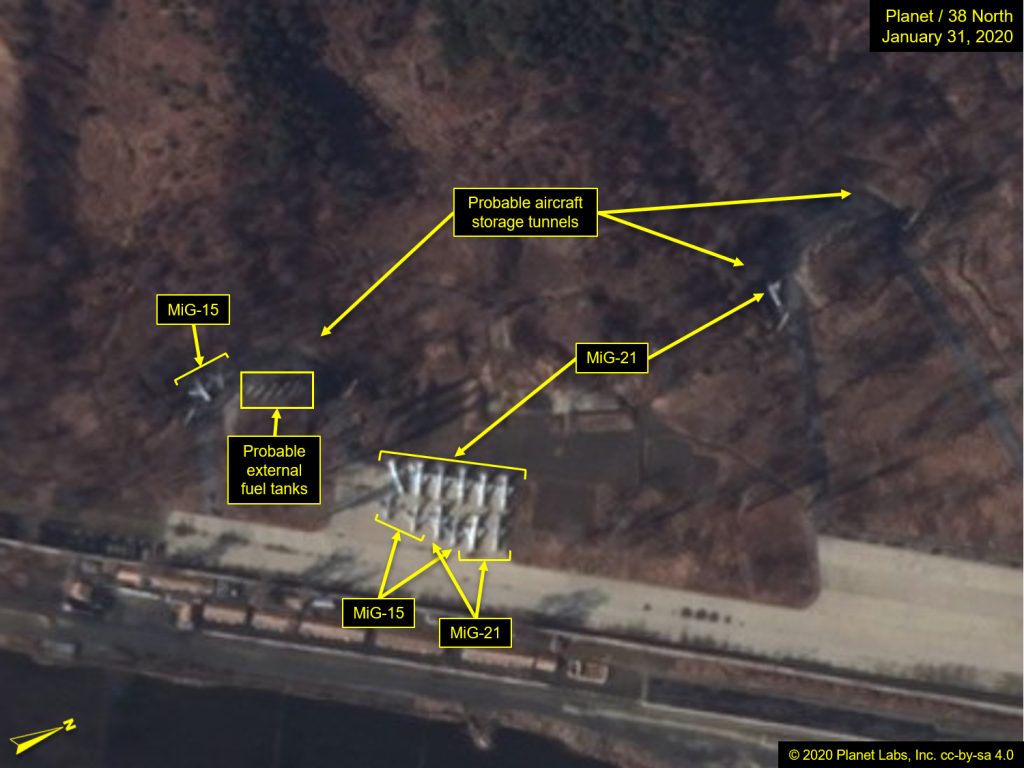Wonsan-Kalma Airfield Air Forces Flight Activity – The New Normal?
Evidence of continued North Korean Air Forces flight activity, observed on commercial satellite imagery taken on January 31 and February 3, 2020, suggests a new normal for the Wonsan-Kalma Airfield.
Background
Commercial satellite imagery from January 17 and 21, 2020, had shown military aircraft flight preparations at North Korea’s Wonsan-Kalma International airport. This was the first flight activity observed at this location since the Combat Flight Contest in mid-November 2019. Wonsan-Kalma is a dual-use airfield, originally serving as an airbase for MiG-17 and -21 fighter aircraft until 2013, when construction began to convert the airfield to serve as both a military airbase and an international commercial airport with the latter intended to serve the adjacent, newly-constructed, Wonsan Beach Resort.
Recent Activity
Imagery of January 31, 2020 and subsequent coverage on February 4, showed a shuffled movement of aircraft since mid-January, and the presence of an additional eight MiG-21 fighter aircraft. The eight additional fighters are parked in pairs in front of four of the aircraft shelters located at the southern end of the west runway. (Figure 1) Given their location, it is likely that they were removed from under the shelters. Assuming they had not been placed one-to-a-shelter, they likely would have been parked inside in a staggered, tandem arrangement, as it does not appear that they would fit placed side-by-side, given the width of the aircraft wingspans.
Figure 1. MiG-21s and MiG-17s visible parked on Wonsan-Kalma International Airport’s tarmac.

On imagery from January 21, the nose cones of six aircraft were observed protruding from the center six of the 12 shelters. They were reported as “possible” MiG-23s, because during the November exercise, there were nine MiG-23s present, each with its nose aligned toward the shelter entrances, one to a shelter, which suggested they were the occupiers. There were also five MiG-21s parked on the apron further away, save for one, which was nestled between two MiG-23s. A MiG-23 was also observed in September 2016, but until the November 2019 exercise, aircraft have not been seen near these shelters. The combination of recent images raises the question of whether the shelters serve as temporary housing for visiting aircraft, or whether there is some mix of MiG-21 and -23 aircraft, which are permanently housed there.
In addition to the eight MiG-21s, three MiG-17s are parked at the south end of the shelter’s apron. An equal number of MiG-17s is no longer parked on the alert apron, where eight MiG-21s and three MiG-17s were also present on January 21, suggesting that these aircraft have been repositioned from there.
At the alert apron, seven MiG-21s were observed parked side-by-side on January 31 and February 2. (Figure 2) In addition to the three departed MiG-17s from this location, one MiG-21 has also departed since January 21. Behind, and slightly to the side of four of the aircraft, drag chutes are laid out on the ground. Presumably, they are in the process of being rolled up for reinstallation into the aircraft. This suggests recent flight activity, as drag chutes are used to slow aircraft upon landing. On imagery from February 4, the chutes are no longer observed.
Figure 2. MiG-21s visible with probable drag chutes.

Adjacent to the rail transfer point, located at the southwest side of the airfield, there are two parking aprons. Immediately west of the aprons are aircraft storage tunnels, located in the mountain which abuts the transfer area. Since January 17, a total of nine MiG-21s and three MiG-15s have been tightly parked together on the southern-most apron, suggesting the area serves as an open storage or holding location. Two additional MiG-15 are parked near one of the tunnel entrances. (Figure 3) On January 31, one additional MiG-21 is observed near a tunnel entrance just to the west of the northern-most of two parking aprons. This aircraft may be the eighth MiG-21, previously observed on the alert apron on January 21. (The DPRK routinely stores weaponry in tunnels as protection against air or artillery strikes. However, maintaining climate control within them can be a challenge, as moisture can affect the avionics and other sensitive electronics on equipment stored inside. It may be for that reason they have opted to store the 12-plus aircraft on the adjacent parking apron.)
Figure 3. Aircraft visible at the rail transfer point near Wonsan-Kalma International Airport.

